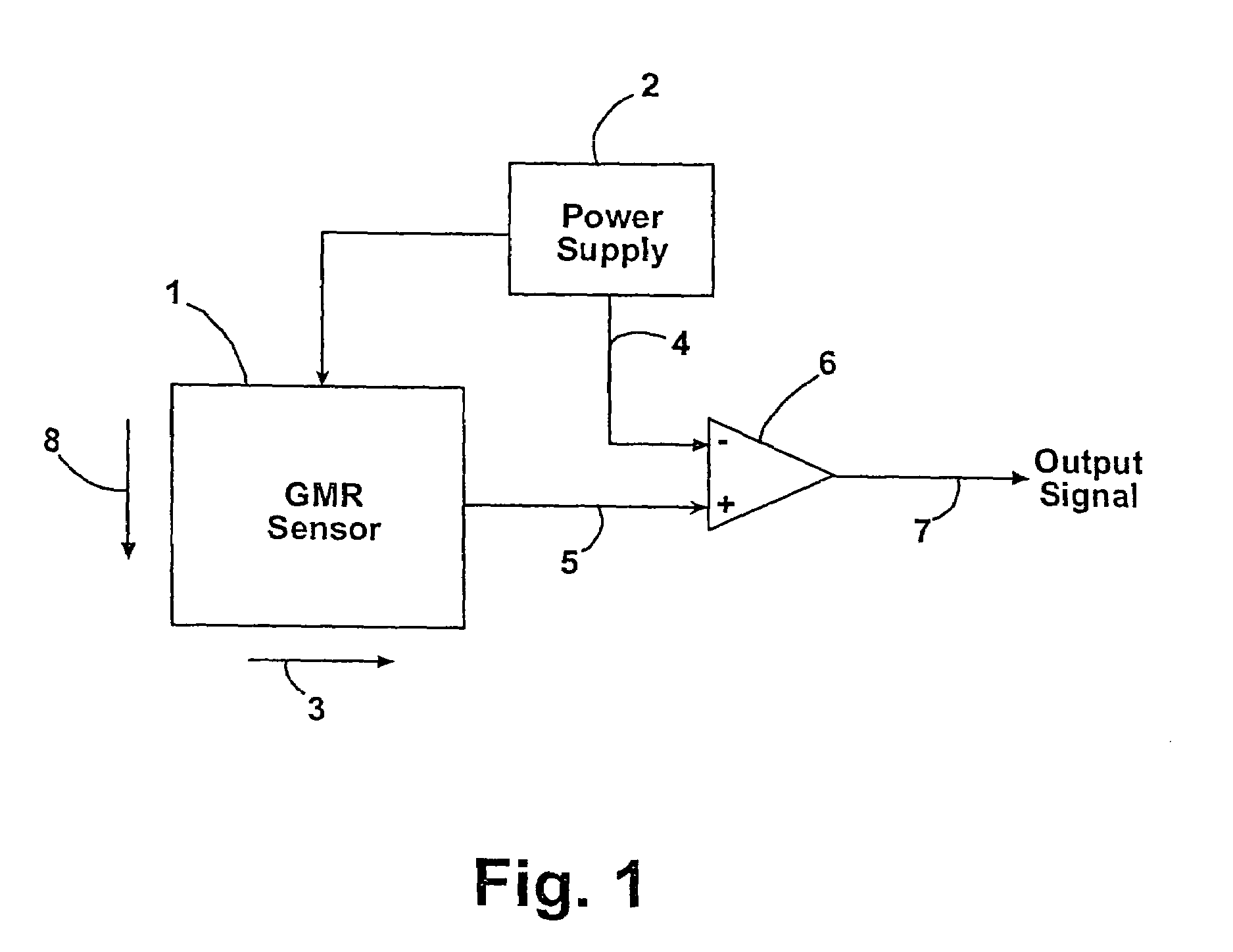High sensitivity biomolecule detection with magnetic particles
a biomolecule and magnetic particle technology, applied in the field of biomolecule detection, can solve the problems of limited usefulness of radioactive probes to detect a specific protein in a heterogeneous population, cumbersome and expensive systems, and short shelf life of radioactive probes, so as to improve the binding effect of probes and reduce background nois
- Summary
- Abstract
- Description
- Claims
- Application Information
AI Technical Summary
Benefits of technology
Problems solved by technology
Method used
Image
Examples
example 1
[0079]In this example, the present invention detects the presence and location of a nucleic acid disposed on a support by means of a magnetic label attached to a nucleic acid. As an example, one microliter containing 100 ng plasmid DNA (pHIS, ≈3700 base pairs / molecule) are spotted on a positively charged nylon membrane (Hybond, Amersham) that is subsequently cut into 1 cm×4 cm strips. The strips are air dried for 10 minutes and each strip is dipped in distilled water for 10 seconds. Next, the strips are contacted with a ferrofluid (EMG607; Ferrofluidics, Nashua N.H.) for two minutes, then washed for 2 minutes in distilled water and air dried.
[0080]Samples are measured using a GMR sensor (T15 model; Nonvolatile Electronics Inc., Eden Prairie Minn.) with bias-magnets, and the voltages are recorded by a PC after analog processing and 12 bit A / D conversion. Output from the prototype magnetic detection system unit for the detection of nucleic acids is shown in FIG. 4. The magnetism of th...
example 2
[0082]In this example, the invention detects a protein disposed on a support. In this example, the invention detects the presence and location of a protein disposed on a support by means of a magnetic label attached to a protein. In one example, 1 ul of a solution containing either mouse IgG or goat IgG is spotted on a membrane that is subsequently cut into 1 cm×4 cm strips. The strips are then air dried and each strip is dipped in distilled water. Next, the strips are contacted with 2 ul of ferrofluid (EMG607; Ferrofluidics, Nashua N.H.). The samples are then washed, allowed to air dry, and are measured using a GMR sensor (T15 model; Nonvolatile Electronics Inc., Eden Prairie Minn.) with bias-magnets, and the voltages were recorded by a PC after processing as in Example 1. The results show that ferrofluid efficiently labeled mouse IgG and goat IgG which was disposed on a support and the proteins are effectively detected using the GMR sensor.
example 3
[0083]The invention also comprises hybridization using magnetically labeled nucleic acid probes are provided. In this example, the invention uses a magnetic label attached to a nucleic acid probe to detect a target nucleic acid disposed on a support. A first oligonucleotide of 52 nucleotides (T54) is used as a target nucleic acid and a second complementary oligonucleotide (T55), bound with a ferrofluid, was used as a probe nucleic acid. One microliter of the target nucleic acid T54 (at 0.5 ug / ul) is spotted on a nylon membrane and is crosslinked with UV light (autolink setting; Stratalinker 2500; Stratagene). Subsequently, the membrane is washed briefly with water and air dried. The probe nucleic acid is made by incubating 2 ug of a complementary oligonucleotide, T55, with ferrofluid (1:1 (v:v) in 10:1 total volume). Unbound T55 is separated and removed from the ferrofluid conjugated T55 by washing with water, as described above.
[0084]The hybridization is conducted as follows. The f...
PUM
| Property | Measurement | Unit |
|---|---|---|
| atomic numbers | aaaaa | aaaaa |
| atomic numbers | aaaaa | aaaaa |
| Tm | aaaaa | aaaaa |
Abstract
Description
Claims
Application Information
 Login to View More
Login to View More - R&D
- Intellectual Property
- Life Sciences
- Materials
- Tech Scout
- Unparalleled Data Quality
- Higher Quality Content
- 60% Fewer Hallucinations
Browse by: Latest US Patents, China's latest patents, Technical Efficacy Thesaurus, Application Domain, Technology Topic, Popular Technical Reports.
© 2025 PatSnap. All rights reserved.Legal|Privacy policy|Modern Slavery Act Transparency Statement|Sitemap|About US| Contact US: help@patsnap.com



